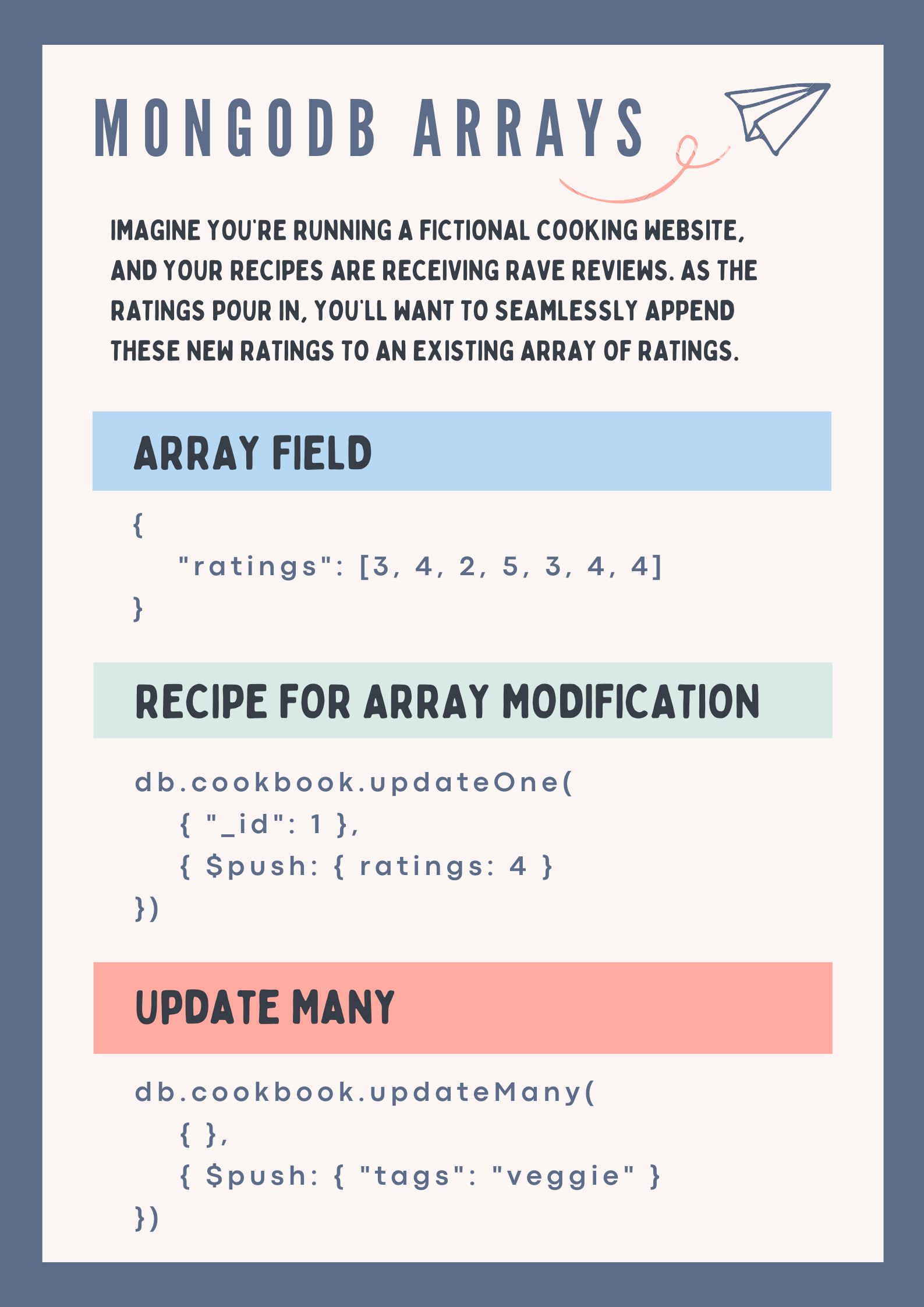In MongoDB arrays play a pivotal role in managing and organizing data. The capability to modify array items is crucial to adapt and evolve your datasets. MongoDB offers an array (pun intended!) of operators that are closely aligned with common array methods found in various programming languages.
Let’s embark on a journey of understanding the nuances of adding elements to arrays using these operators.

The Recipe for Array Modification
Imagine you’re running a fictional cooking website, and your recipes are receiving rave reviews. As the ratings pour in, you’ll want to seamlessly append these new ratings to an existing array of ratings. Consider an example ratings array:
"ratings": [3, 4, 2, 5, 3, 4, 4]To effortlessly achieve this, MongoDB presents one of its most ubiquitous array operators: $push. This operator does exactly what it suggests – it adds an item to an array. If you’re looking to update the ratings array for a recipe with an _id of 1, you can execute the following query:
db.cookbook.updateOne(
{ "_id": 1 },
{ $push: { ratings: 4 }
})The beauty of $push lies in its versatility. You can also harness the updateMany() function to make updates across multiple documents that meet specific criteria.
For instance, to add a new tag “veggie” to the tags array in all documents within the cookbook collection, you can employ the following query:
db.cookbook.updateMany(
{ },
{ $push: { "tags": "veggie" }
})Upon executing this query, MongoDB provides feedback on the changes made:
{
"acknowledged": true,
"insertedId": null,
"matchedCount": 300,
"modifiedCount": 300,
"upsertedCount": 0
}It’s important to note that running the query repeatedly will keep adding the specified item to the array, consistently at the end.
If the targeted field doesn’t exist, MongoDB will seamlessly create it for you using an “upsert”.
Evolving Your Data Elegantly
In the grand tapestry of MongoDB operations, adding elements to arrays is fundamental. With the $push operator at your disposal, you can seamlessly inject new dimensions into your datasets. Whether it’s accommodating user-generated ratings, appending tags to recipes, or any other dynamic data enrichment, MongoDB empowers you to orchestrate your data’s evolution with ease.
In essence, the power to modify arrays isn’t just about updating data; it’s about enhancing the functionality of your applications. By carefully leveraging MongoDB’s array operators, like the mighty $push, you’re not just managing data – you’re sculpting experiences.

